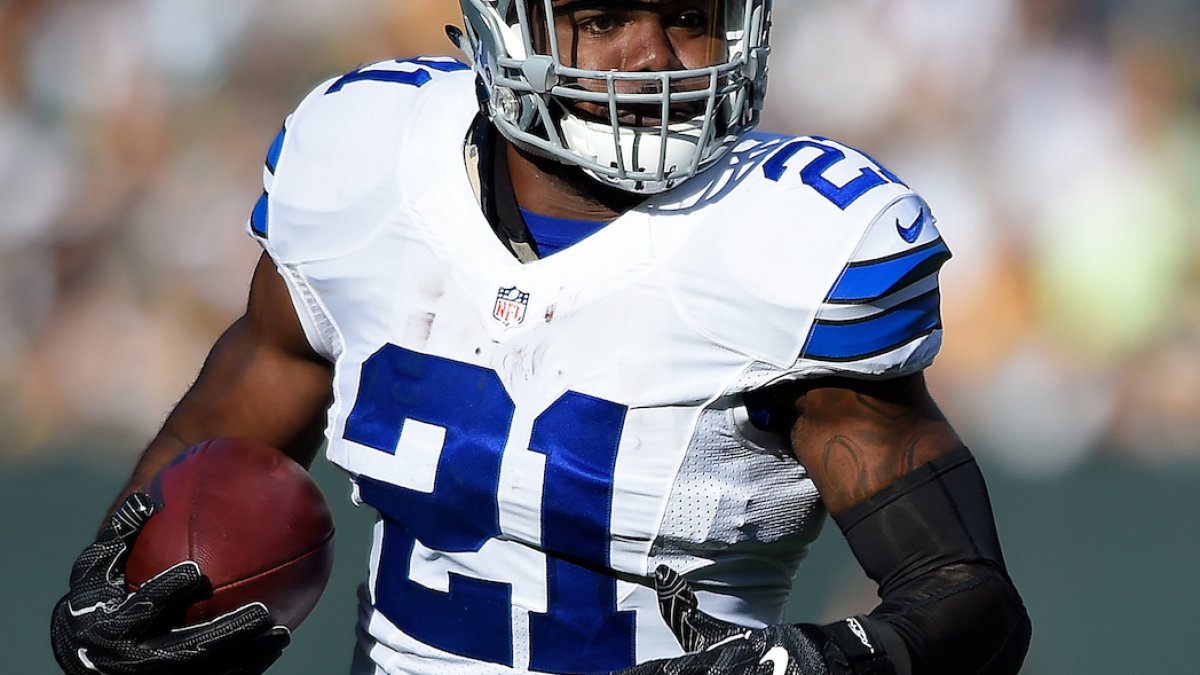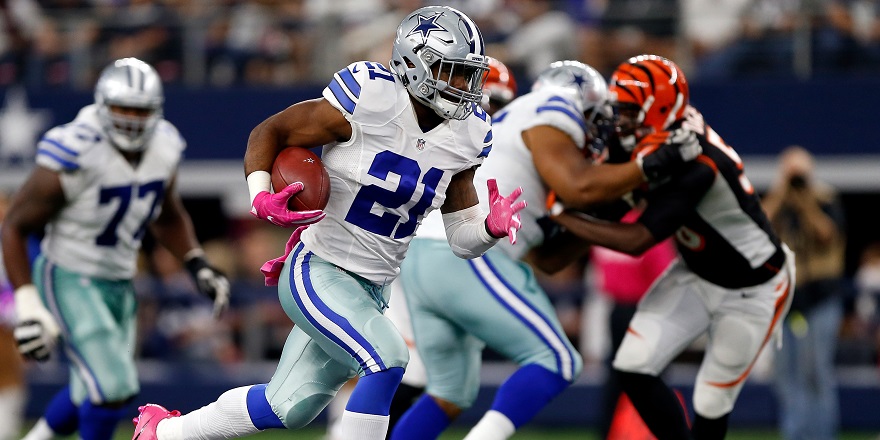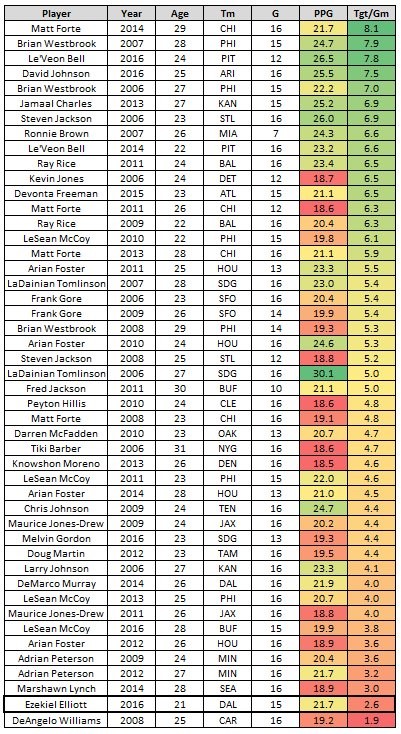(“Metrics that Matter” is a short feature that appears every Tuesday, Wednesday, and Saturday, highlighting a notable fantasy lesson to be learned from PFF’s advanced stats.)
Ezekiel Elliott was amazing last season and needs to be in the conversation with Le’Veon Bell, David Johnson, and Antonio Brown as one of the first picks off the board in your PPR fantasy drafts. I’m sure you already know this, but I’m not sure if you know exactly why Elliott’s 2016 fantasy season was so special.
Bell was amazing because he was hyper-efficient and saw a tremendous workload. Last season, Bell was the only running back to rank top-six in yards per carry, yards after contact per attempt, missed tackles forced per attempt, and yards after the catch per reception. 87.4 percent of his carries resulted in positive yardage — the highest rate in the league.
Last season, Bell ranked first among running backs in carries per game and targets per game. When active, he played on 93 percent of his team’s running back snaps (14 percent more than next-closest). He led all running backs in routes run per game (32.6) — even more than wide receivers Julio Jones (32.3) and Jarvis Landry (31.6).
Johnson was slightly less efficient, but had a nearly equally impressive workload. He ranked first in total snaps and routes run at the position. He ranked second in targets per game (2.4 more than the next-closest running back) and sixth in carries per game. Johnson also ranked first in opportunities inside the five-yard-line per game and second in opportunities inside the 10-yard-line per game.
Meanwhile, Elliott’s workload wasn’t nearly as impressive, but he made up for it in efficiency, ranking third in yards per carry and second in yards per target (among all running backs with at least 150 carries). Elliott was equally as efficient near the end zone as well.
Elliott ranked only 11th in red-zone opportunities last season, but first in red-zone conversion rate (among all 32 running backs with at least 20 opportunities). He also ranked 12th in opportunities inside the 5-yard line with 11, but converted seven of these for touchdowns (no running back with as many opportunities converted at a higher rate). Four of Elliott’s touchdowns came outside of the red zone last season – tied with Johnson for most in the league.
Most surprisingly, Elliott ranked second in carries per game, but a lowly 41st in targets per game (among all running backs to play at least seven games). In PPR leagues, the average running back carry is worth 0.59 expected fantasy points, while the average target is worth 1.57 fantasy points.
To show how important targets are for running backs in PPR leagues and how impressive Elliott’s season was in spite of such low target volume, here's a list of every instance of a running back (since 2006) recording at least 18.5 fantasy points per game, with the players sorted by targets per game:
You’ll note Elliott ranks 19th in fantasy points per game (of 47 qualifying running backs), despite also ranking second-last in targets per game (only ahead of DeAngelo Williams’ 20-touchdown 2008 season).
Recent comments from Cowboys running backs coach Gary Brown inspire optimism regarding Elliott's potential as a receiver. When asked if he'll be used more in the passing game, he said, “Absolutely. We're going to try to get him the ball that way.”
Receiving back Lance Dunbar wasn’t especially highly targeted (2.2 targets per game) last season, but his departure to Los Angeles certainly bodes well for Elliott. Though Elliott led in pass-blocking efficiency in his final year of college, he wasn't asked to block as often last season as many might expect. Instead, he ran a fair number of routes (14th-most), but just wasn't targeted on very many of them – though I’m not sure why. Elliott ranked top-three in yards per target and yards after the catch per reception. He caught 86.4 percent of his targets last season — eighth-most of 46 qualifying running backs. During his final two years of college, he caught 89.7 percent (52 of 58).
On the back of a hyper-efficient fantasy season and hopefully an increase in target volume, the sky’s the limit for Elliott (so long as Bell and Johnson are the “outer space” to Elliott’s “sky”).





 © 2024 PFF - all rights reserved.
© 2024 PFF - all rights reserved.